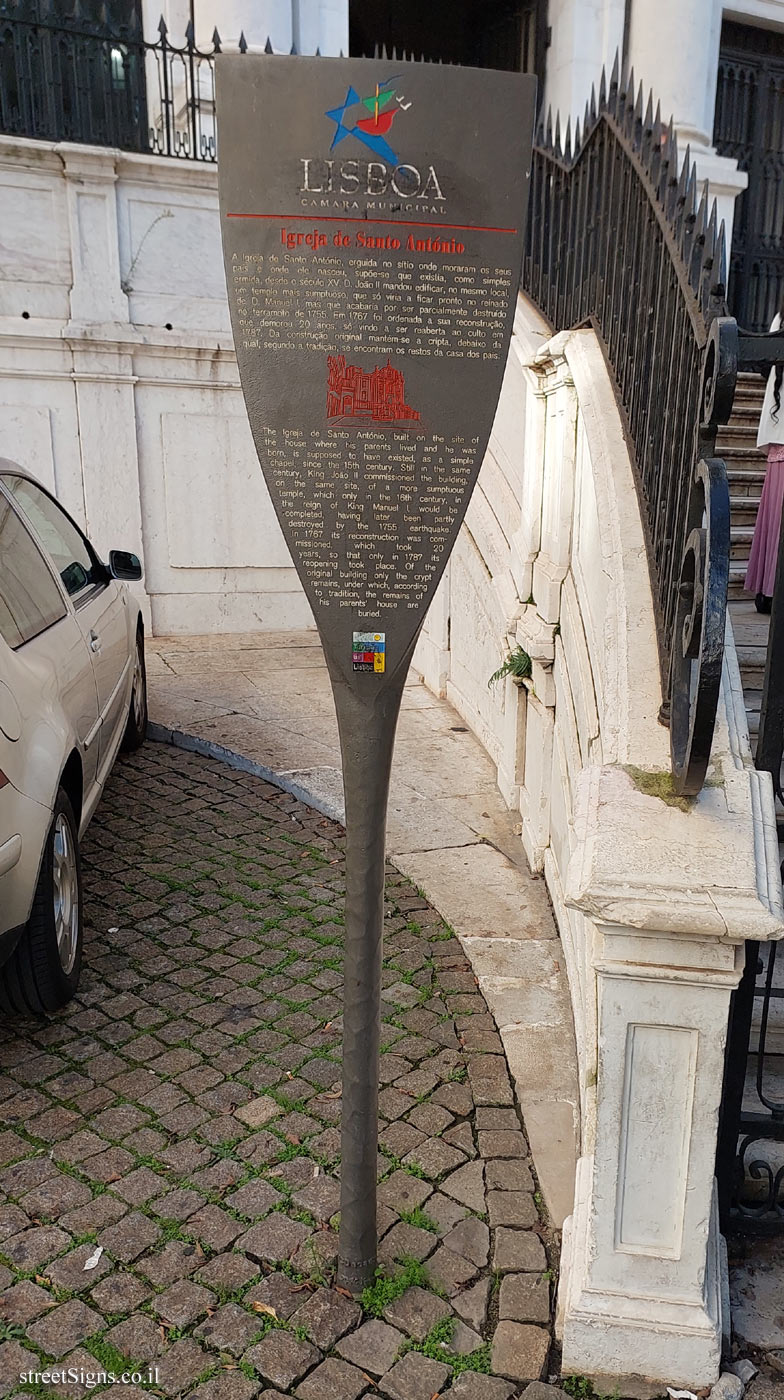On the sign:
LISBOA CAMARA MUNICIPAL
Igreja de Santo António
A Igreja de Santo António, erguida no sítio onde moraram os seus pais e onde ele nasceu, supõe-se que existia, como simples ermida, desde o século XV. D. João Il mandou edificar, no mesmo local, um templo mais sumptuoso, que só viria a ficar pronto no reinado de D. Manuel I mas que acabaria por ser parcialmente destruído no terramoto de 1755. Em 1767 foi ordenada a sua reconstrução, que demorou 20 anos, só vindo a ser reaberta ao culto em 1787 Da construção original mantém-se a cripta, debaixo da qual, segundo a tradição, se encontram os restos da casa dos pais.
[Drawing of the Santo António de Lisboa church]
The Igreja de Santo António, built on the site the house where his parents lived and he wa born, is supposed to have existed, as a simple chapel, since the 15th century. Still in the same century, King João II commissioned the building, on the same site, of more sumptuous a temple, which only in the 16th century, in the reign of King Manuel I, would be completed, having later been partly destroyed by the 1755 earthquake. In 1767 its reconstruction was com- missioned, which took 20 years, so that only in 1787 its reopening took place. Of the original building only the crypt remains, under which, according to tradition, the remains of his parents’ house buried.
Turismo de Lisboa
Comments:
The sign is in front of the church of St. Anthony - he is Anthony of Padua, a Catholic saint, born in Lisbon (according to legend, he was born in the place where the church is located). The city of San Antonio, in Texas, United States, is named after him.
The church was photographed on the same day
 Click for a larger image
Click for a larger image The next picture shows the sign in its entirety
 Click for a larger image
Click for a larger image
Learn about:

 Click for a larger image
Click for a larger image  Click for a larger image
Click for a larger image